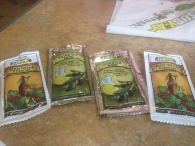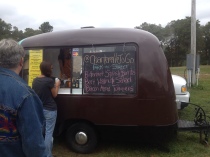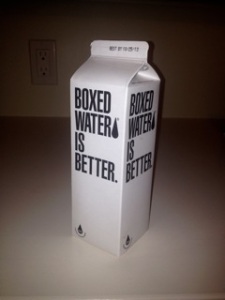My husband and I recently attended a fascinating lecture on climate change given by a scientist and director of the Woods Hole Research Center in Woods Hole, MA on Cape Cod. The center, ranked the #1 climate think tank in the world, researches the causes and effects of climate change and creates opportunities for restoration, conservation, and economic development around the world. Tesla cosponsored the event, which as the speaker pointed out, is not a usual practice for a center such as theirs. They do not typically align themselves with a car company. Tesla’s new mission however, “to accelerate the world’s transition to sustainable energy”, is more in line with the Center’s goals. Their cosponsorship is an example of business and scientists working together.
There were some space-age, very cool electric Tesla cars to test drive, followed by the talk, which focused on the main contributing factors to climate change – deforestation in the Amazon and the Congo, the warming Arctic, “occurring twice as fast in this region than anywhere else”, and the consequences which are already occurring though global sea level rise, widespread wildfires, permafrost thaw, and extreme weather.

When the speaker was asked if there was any one thing people could do to help reverse the effects of climate change, he immediately said plant a tree. Trees are the earth’s lungs absorbing carbon dioxide and other pollutant gasses. He elaborated saying that each individual can make an impact on reversing the effects of climate change by doing simple things in their daily life to conserve water and energy.

The tag line to “What’s Green With Betsy” is “Simple Steps That Make A Difference…” To hear a renowned scientist from such an important institution say basically the same thing gives me great hope. Keep going greener – we can make a difference! As Margaret Mead said, “A small group of thoughtful people could change the world. Indeed, it’s the only thing that ever has.”
For more green living tips, visit greenwithbetsy.com.

 Fair Trade USA label or a comparable label like the one above.
Fair Trade USA label or a comparable label like the one above.

 Have you ever heard of Preserve recycled toothbrushes? I’ve been using them for years and wouldn’t use any other kind. Not only are they made from recycled yogurt cups (the bristles are new!), but Preserve worked closely with dental professionals to develop a toothbrush with an ergonomic handle for hard-to-reach places and a three-level bristle arrangement for thorough cleaning. Unlike most toothbrushes, Preserve’s minimize your impact on the environment.
Have you ever heard of Preserve recycled toothbrushes? I’ve been using them for years and wouldn’t use any other kind. Not only are they made from recycled yogurt cups (the bristles are new!), but Preserve worked closely with dental professionals to develop a toothbrush with an ergonomic handle for hard-to-reach places and a three-level bristle arrangement for thorough cleaning. Unlike most toothbrushes, Preserve’s minimize your impact on the environment.
 are placed at 250 Whole Food locations across the county where anyone can drop of #5 plastics including caps from Plum Organics and other similar products, which so often don’t make it into the recycling stream. Or you can take advantage of their mail back programs.
are placed at 250 Whole Food locations across the county where anyone can drop of #5 plastics including caps from Plum Organics and other similar products, which so often don’t make it into the recycling stream. Or you can take advantage of their mail back programs. According to Turo, “car owners can turn their idle cars into cash-generating rental car businesses and make extra money to offset their car expenses. On the other side, renters get to rent unique cars (
According to Turo, “car owners can turn their idle cars into cash-generating rental car businesses and make extra money to offset their car expenses. On the other side, renters get to rent unique cars (














